Collectible Investments: 10 Best Assets in 2025 + Insider Tips
Collectibles as an alternative investment class includes objects valued much higher than when they were originally sold. Think rare wines, stamps, toys, antique weapons, NFTs, and many more!
But what makes collectibles so special?
There’s, of course, the thrill of obtaining a one-of-a-kind, aesthetically pleasing physical asset. Besides that, collectibles also offer portfolio diversification, the potential for high returns, and a hedge against inflation.
But not without investment risk.
So, knowing the basics can give you an edge before you dive in!
Check out the 10 best collectible investments, their advantages, disadvantages, and things to consider before investing. We’ll also reveal how Vinovest can help you invest hassle-free in one of the best collectibles — fine wine.
Further reading
- Explore other lucrative investment classes like mutual fund and ETF assets with our Detailed Guide on Alternative Investment.
- Discover what Liquid Alternatives are and if they’re worth investing in.
- Or, discover if Gold is a Good Hedge Against Inflation.
This Article Contains
- 10 Best Collectible Investments
- 4 Things to Remember when Investing in Collectibles
- 2 Advantages of Collectible Investments
- 5 Disadvantages of Collectible Investments
- Invest in Collectible Wine Through Vinovest
10 Best Collectible Investments
Here are the best collectible investments you can add to your portfolio:
- Investment-Grade Wine
- Comic Books
- Toys
- Stamps
- Fine Art
- Coins
- Sports Memorabilia
- Sneakers
- Movie Collectibles
- Cars
1. Investment-Grade Wine

Investing in fine wine has become increasingly popular in recent years. The Liv-Ex 1000 index also shows a stable growth — a 24.6% annual return in 2022, outperforming the traditional stock market indices like S&P 500 (-1.18%) and Dow and Jones (-10.98%).
Some fine wines can fetch great returns due to their rapid price appreciation, low supply, and high demand. For instance, the 1869 Chateau Lafite (estimated at $60,000) sold for $230,000 at a 2010 Sotheby’s auction in Hong Kong.
More recently, Christie’s “Iconic Wines Part III” auction in May 2025 fetched around $9.3 million.
The standout lot?
10 bottles of Henri Jayer Vosne-Romanée Cros Parantoux 1999, which sold for $416,000, tripling its pre-sale estimate.
However, fine wine assets face the same disadvantages as other collectibles (such as the risk of getting scammed and paying high maintenance costs). But luckily, Vinovest has managed to tackle all of these obstacles and offers a beginner-friendly and hassle-free wine investment experience (more on that in a bit).
2. Comic Books

First edition or classic cover comic books can fetch pretty good returns. For example, a copy of Action Comics No. 1, the comic book that introduced Superman in 1938, sold for $6 million at Heritage Auctions in April 2024, making it the most expensive comic book ever sold publicly.
But you need to research which comic books will be profitable because not every book would be a valuable physical asset.
3. Toys
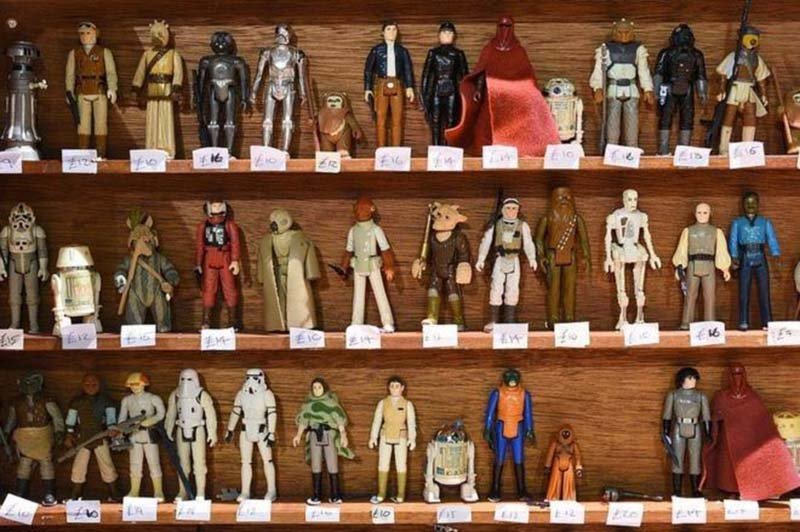
These tangible assets include dolls, action figures, Lego sets, and other popular but extremely rare toys (My Little Pony, vintage Barbie dolls).
One of the most expensive toys ever sold was an extremely rare prototype Star Wars Boba Fett action figure, which sold for $1.34 million at a Goldin Auctions sale in August 2024, setting the record for the most expensive vintage toy ever sold.
4. Stamps

Stamps are a popular collector’s item because they are:
- A low-cost initial investment
- Released in small batches, which increases their value
While finding extremely rare stamps could be quite challenging, the returns are good. For example, the Mauritius Post Office stamps are available in only 27 examples. In 2021, one such stamp was sold for $12,760,600 (more than some of the greatest fine art pieces).
5. Fine Art

The fine art market had an estimated value of $57.5 billion in 2024, according to the Art Basel UBS Art Market Report 2025, produced by Art Economics.
The good thing about fine art collectibles is that they keep appreciating constantly. This means you can sell such items much more easily than other collectibles.
Also, fine art pieces are usually one-of-a-kind, which makes them extremely rare, unique, and thus highly valued (especially by high net worth individuals).
The best part?
You can use them as decorative pieces in your house while waiting to sell!
One of the most expensive art pieces ever sold is the 1986 Rabbit sculpture by Jeff Koons, which sold for $91,075,000 at a 2019 Christie’s auction.
6. Coins

Coins that are extremely rare, no longer in circulation, or related to some historical event are usually valuable collectibles. For example, the 1794 Flowing Hair Silver Dollar (believed to be the first coin minted by the US Federal Government) sold for $10 million in 2013.
If you’re just starting your coin collection, invest in commemorative coins or coins produced in limited batches.
7. Sports Memorabilia

These tangible assets include jerseys, trading cards, bats, balls, baseball card collections, helmets, and more.
In August 2024, a game-worn Babe Ruth “Called Shot” jersey from the 1932 World Series shattered all records when it sold for $24.12 million at Heritage Auctions, becoming the most expensive piece of sports memorabilia ever sold.
8. Sneakers
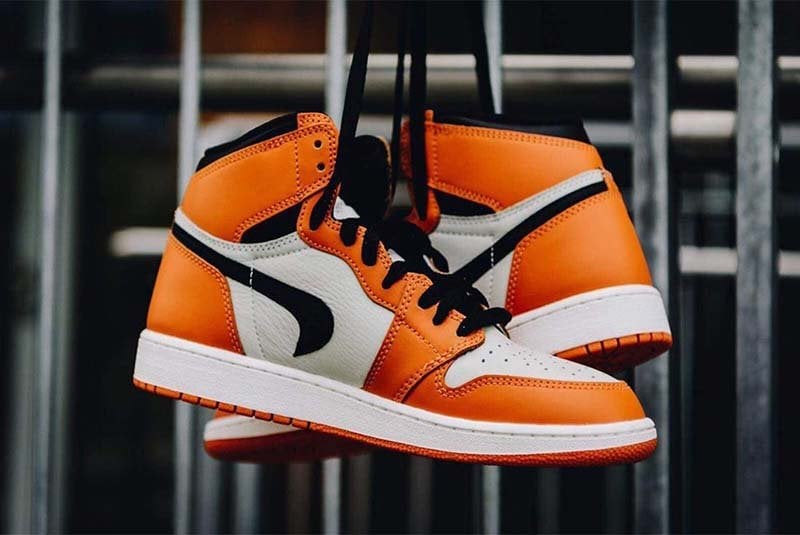
Sneakers have become a popular collectible among investors only in recent years.
But don’t rush to your old shoe rack just yet — condition and provenance matter.
Most collectible sneakers need to be brand-new and unworn, unless they’re tied to a significant moment or public figure.
Nike, Adidas, and Air Jordans are the most pursued brands. For instance, the original Nike SB What the Dunk retailed for just $120 but is now valued at around $5,000 in deadstock condition.
However, game-worn sneakers worn by iconic athletes can be even more valuable. In February 2024, a collection of six game-worn Air Jordan shoes sold at Sotheby’s for a staggering $8 million.
9. Movie Collectibles
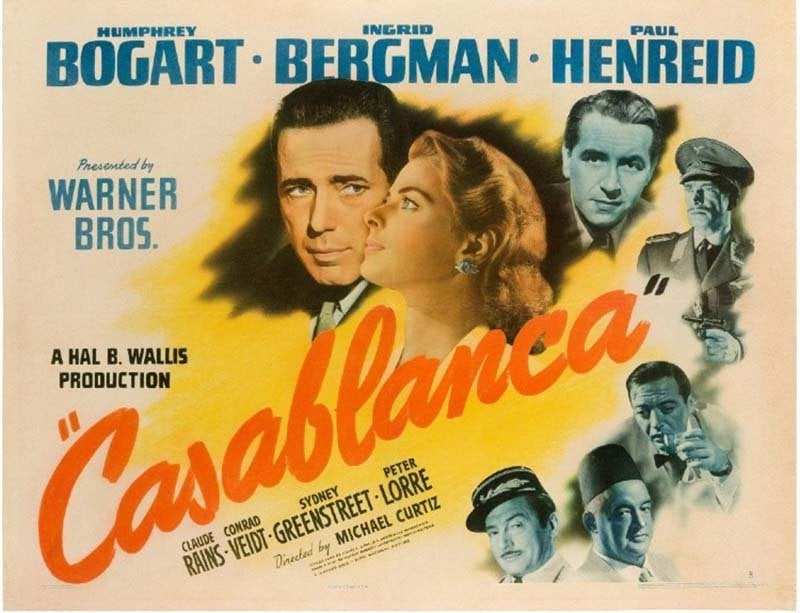
Movie collectibles such as items from movie sets and movie posters can fetch high prices.
To identify a valued movie collectible, look out for things that were used by popular movie stars or beloved celebrities who died tragically.
The current standout?
The ruby slippers worn by Judy Garland in The Wizard of Oz sold in December 2024 at Heritage Auctions for $28 million (totaling $32.5 million with fees), making them the most valuable movie memorabilia ever sold at auction.
10. Cars

Some classic automobiles can fetch astonishing prices in the collectibles market — and the numbers back it up.
The classic cars market was valued at USD 39.7 billion in 2024 and is projected to nearly double to USD 77.8 billion by 2032, growing at a CAGR of 8.7% over the forecast period.
While prices can fluctuate year to year, certain rare models continue to command sky-high bids.
Case in point: the 1955 Mercedes-Benz 300 SLR Uhlenhaut Coupe, which sold for approximately $142 million in 2022, making it one of the most expensive cars ever auctioned.
4 Things to Remember when Investing in Collectibles
Here are some things you should keep in mind when starting your collectible investing journey:
- Buy Collectibles You’re Passionate About
- Understand How to Value Collectibles
- Ask for a Written Guarantee
- Consider Buying Insurance
1. Buy Collectibles You’re Passionate About
Collectibles can fluctuate in value — one day, you can sell your collectible at a huge profit, and on the other, it might be worthless.
That’s because the value of such items is in the eye of the beholder. They’re seen as a reflection of the collector’s keen eye and taste!
So, even a small wealth gain should be seen as a fringe benefit. (There’s no guarantee you’ll make a profit — unless it’s an asset like fine wine!)
2. Understand How to Value Collectibles
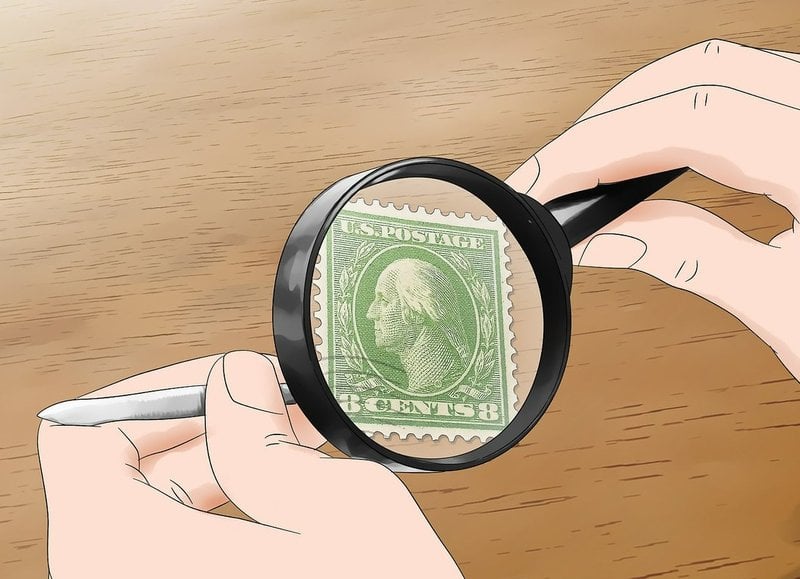
Knowing how much a collectible is worth is a vital factor in determining whether you should invest in it or not.
To assess the investment perspective of the collectible, you should research its:
- Origin: Always find out the ownership history of the collectible. This way, you protect yourself against buying illegally acquired objects.
- Authenticity: Being able to prove that the underlying asset is the real deal can skyrocket its market value, so always ensure that what you have is 100% authentic.
- Rarity: If you manage to get your hands on a rare, unique collectible, you can easily sell it at a profit later on.
- Condition: Collectibles traded for investment purposes can diminish significantly in value if they have even the slightest visible damage. So, ensure that what you’re buying is well-preserved and undamaged.
Alternatively, if assessing each of these parameters seems like too much hassle, you can seek the expert opinions of financial advisor professionals to help you evaluate the object.
3. Ask for a Written Guarantee

If you stumble upon a deal that’s too good to be true, ask the seller for a written buy-back guarantee on the underlying asset (usually applicable for a specific time period).
This will allow you to return the collectible to the dealer who will buy it at the same price and resell it to someone else.
4. Consider Buying Insurance

Collectibles insurance protects your valuables from theft, loss, or damage.
Insurance is a must if you own a huge collection of rare items. But you can also purchase it for smaller-sized collections as well.
2 Advantages of Collectible Investments
Here are some of the pros of getting into the collectibles investment game:
1. Personal Satisfaction

With collectible investing, you don’t simply invest for the profits but also for the thrill of it.
Imagine how satisfactory it is to know you’re one of the few investors in the world who own a rare piece of art or a century-old bottle of wine!
2. Portfolio Diversification & Potential for High Returns

Valuable collectibles have a low correlation with the stock market. So when prices of traditional investment assets like stocks and bonds go down, collectibles and other alternative assets often go up.
Additionally, if you purchase the right collectible at the right time, you might be able to reap huge returns in the future. But this lucrative opportunity comes with a certain degree of investment risk.
5 Disadvantages of Collectible Investments
If you start investing in collectible items, you should keep these disadvantages in mind:
1. Fraud
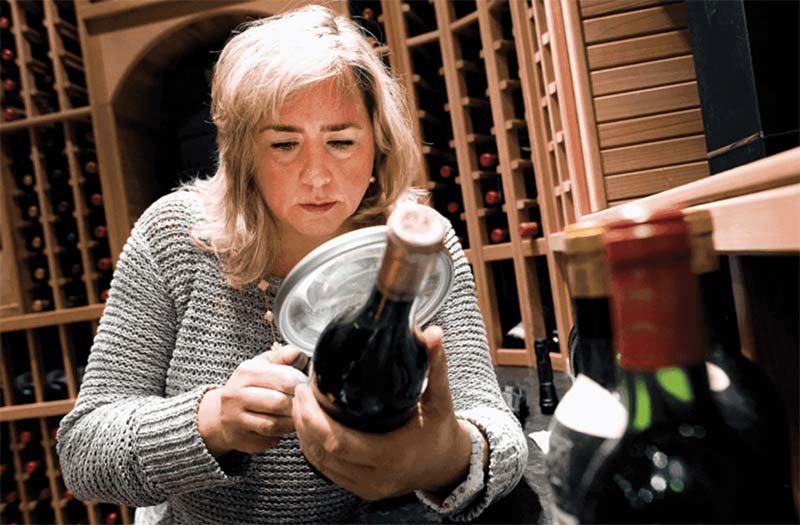
Unlike the stock market, the collectibles asset class is not regulated by a legal entity. This means if you get scammed, no one can help you, and you’ll lose your money.
That’s why you should be very cautious when purchasing collectibles and know how to tell authentic from fake and a legit dealer from a con artist.
2. High Markups

Since collectibles don’t trade in public markets, they can be sold with extremely high markups. That’s because dealers and auction houses aim to make a profit when selling such assets.
Very rarely is it the case that you can buy directly from a collector at a good price.
3. Maintenance Expenses

If you plan to store your collectibles until they appreciate in value, you should consider all the maintenance costs that will occur during the appreciation timelines. These could include anything from more affordable protection cases to costly storage rooms that maintain optimal conditions for your precious items at all times.
4. Diminished Value due to Damages

Any damages like small scuffs, scratches, and other wear and tear signs will bring down the value of your collectible.
5. Liquidity Challenges

Collectibles are considered illiquid assets since:
- You might have to wait quite a while to find the right buyer.
- Appreciation timelines can sometimes extend to decades, so you can’t sell immediately (in contrast to most traditional investment assets like stocks which don’t face the same liquidity challenges).
But what if we tell you there’s a way to invest in a collectible asset without all these hassles?
The leading wine investment platform, Vinovest, can help you build a portfolio of fine wine easily!
You can simply kick back and watch your precious wine bottles appreciate in value from the comfort of your home.
Let’s see how it works!
Invest in Collectible Wine Through Vinovest
Vinovest is an AI-based platform that helps you buy, store, and sell wine bottles from all around the world with just a few mouse clicks.
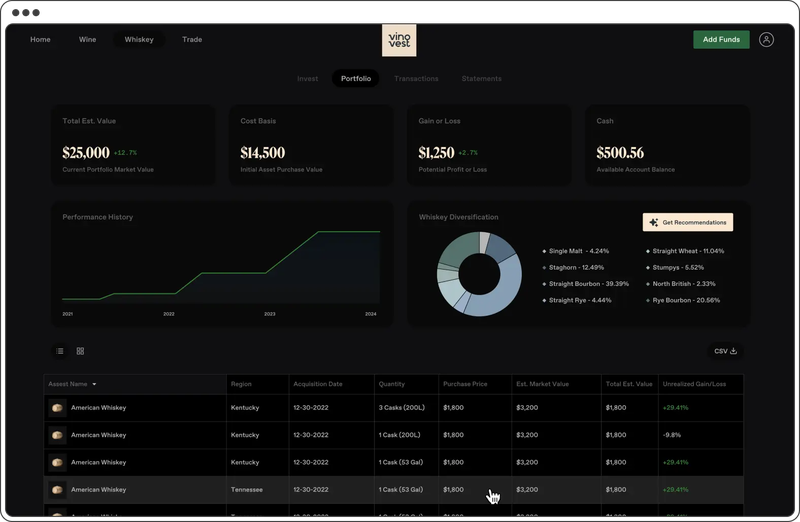
The best part?
You don’t need to be a high net worth investor to get started (minimum investment is only $1,000).
Here are the main benefits:
- Storage: All your bottles are stored at bonded warehouses that maintain optimal storage conditions, so you don’t have to worry about building an expensive wine cellar yourself.
- Selling: Bought a bottle of wine through Vinovest, but now you want tosell it? No worries! Vinovest will help you find the highest-paying buyer and make a profit out of every wine bottle.
- Insurance: All your bottles are insured against theft, damage, and loss, so you can rest assured your investment is safe and sound with Vinovest.
- Authenticity: As with any other collectible, getting a counterfeit bottle of wine is possible if you buy from random merchants and distributors. But with Vinovest, you can forget all your worries about getting a fake. Vinovest’s team of wine experts and master sommeliers traces the provenance and guarantees the authenticity of every single bottle of wine before the money leaves your wallet.
- Fees: All these perks come at a minimum fee of only 2.5% (or 1.9% for portfolios of over $50,000), and this covers all the services, from buying, storing, and selling to authenticity check, insurance, and portfolio management.
So, if wine investing is something you’d like to try, sign up on Vinovest today and build a winning wine portfolio hassle-free.
Want to see the potential ROI you could get by investing through Vinovest?
Check out these recent wine exits:

Make Profits While Pursuing Your Passion

Collectibles such as trading cards, Lego sets, and antique weapons are assets that offer not only financial gain but also personal satisfaction.
This might be a good long-term investment option if you know what to invest in, when, and how to preserve your collectible items until you’re ready to sell.
Want to dip your toes into thefine wine investment world and build a successful wine portfolio?
Sign up on Vinovest, and all else will be taken care of for you.



